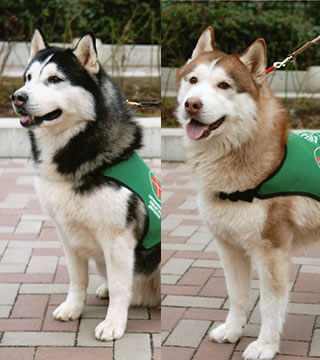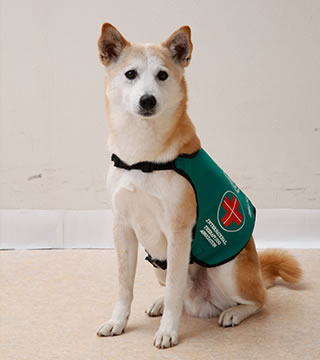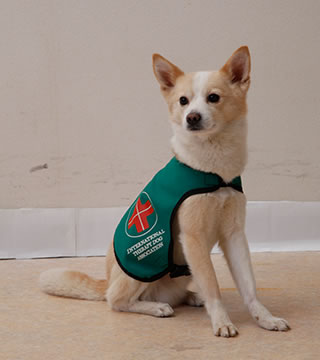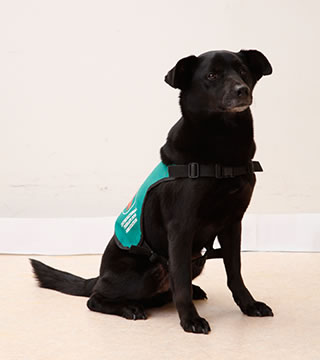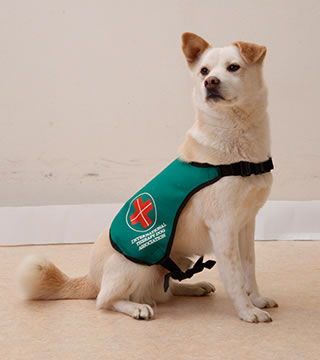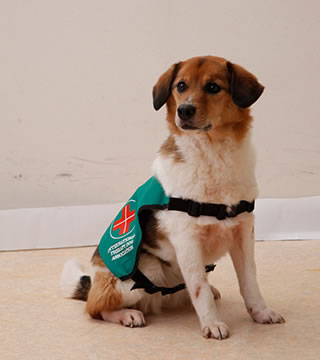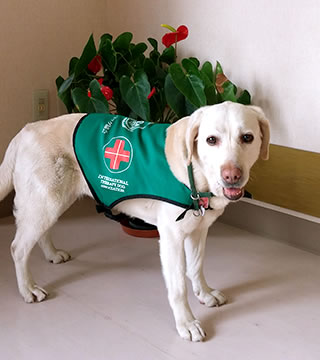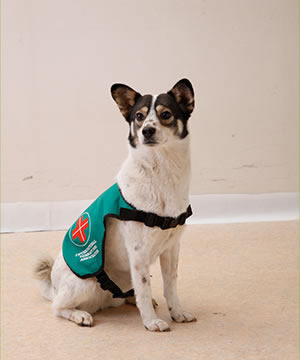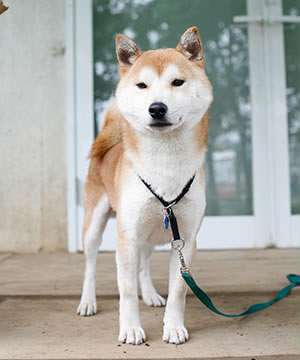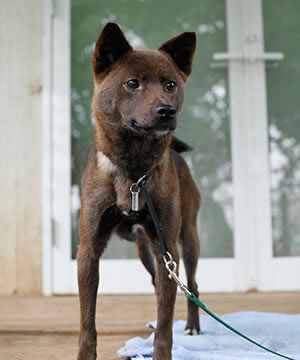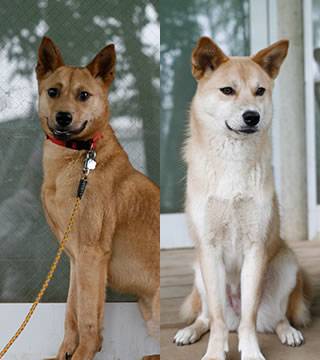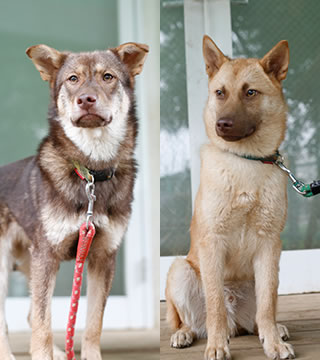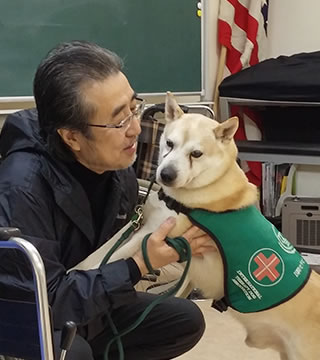At ITDA, we rescue stray dogs and dogs that had lost their owners and had no place to
go after the 2011 earthquake/tsunami, and train them to become therapy dogs. After
recovering health both mentally and physically, these dogs spend over 2 years of
training to master a training curriculum consisting of more than 45 steps. Once they
receive sufficient on the job training at various facilities, they will be certified as
therapy dogs. There are dogs of various breed and age, even ones that have overcome
physical disabilities, which are still active in the field as therapy dogs.
Some of the Training Steps
Eye Contact
Eye contact is when a person (handler and/or patient) and a dog look at each other. This
is to coordinate each other’s feelings and wishes, and is important in establishing trust
between the two. A dog will judge a person’s situation through this eye contact.
Heel Walk
This movement is the basis for all other training. The dog will maintain just enough
distance from a person’s leg on the left side and walk at the same speed as the person.
During the training, the speed or the direction may be changed, or the person may use a
cane so that the dog will be able react immediately to any changes in the person’s
movement and walk alongside the person. “Types of walking speed” Regular, fast
walking, running, slow walk, cane walk, cross walk ( when there are obstacles), walking
alongside a wheelchair etc.
Line Manners
This is when multiple dogs are trained together to walk at the same speed. The purpose
of this training is for the dogs (especially for disowned dogs or dogs with little external
contact growing up in closed environment) to regain their sociability.
Training With Rehabilitation Patients in Mind
Cane Walk
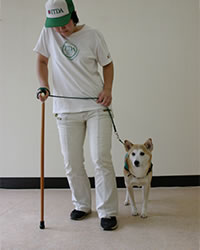
-
This is mainly to learn to walk at same speed alongside an elderly person. You walk
slightly slower than normal to imitate the pace of a person walking with a cane and
make the dog understand this pace. Some dogs may feel threatened by the cane from
past experiences of being beaten by sticks when they were strays. You will have to work
together with the dogs to help them overcome this fear. There is a variation of cane walk
training where a dog is trained to walk at the same speed alongside a person with
injuries from accidents or suffering from aftereffects of diseases. The dogs are not only
trained to react to the changes in the pace but also to the person’s irregular movements.
Walking Manners With Wheelchair
This is to train the dog to walk at the same speed alongside a person on a wheelchair.
With normal heel walk, the dog will be walking a little distance away on the left side of
the person. But in case of a wheelchair, the dog will be walking just next to the
wheelchair on the left side. The dog is trained to listen to the sound of the brakes on the
wheelchair being unlocked, and when the signal is given, the dog will start walking
alongside the wheelchair. At this time, you must be careful so that the wheel will not
run over the dog’s foot.
Bed Manners
This is to train the dog for providing therapy to patients in private rooms at hospitals
and nursing homes who cannot move or get up from bed. The dog is trained from how to
enter the room, approach the bed, get off the bed until leaving the room.
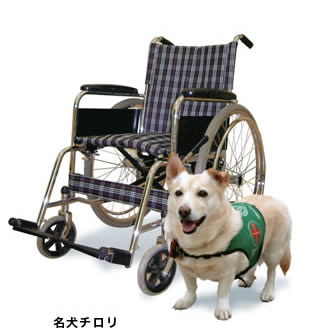





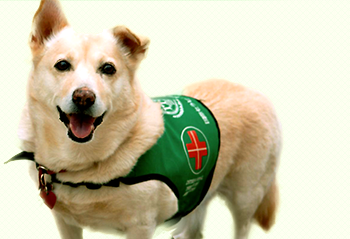

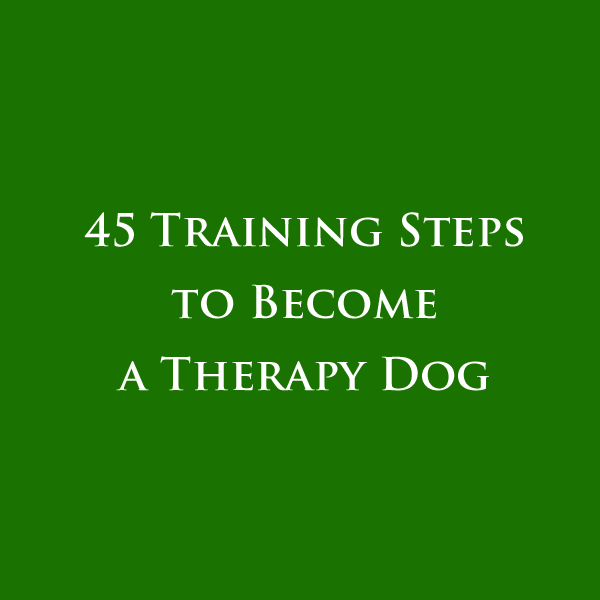
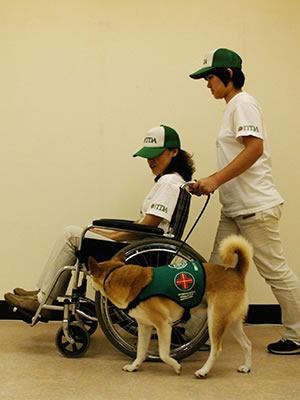
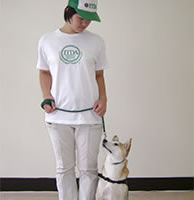
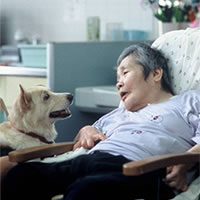
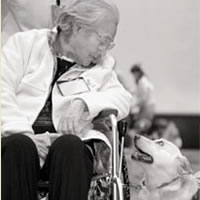
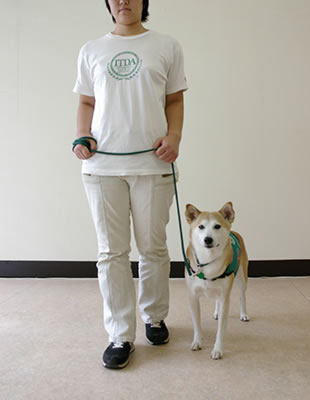
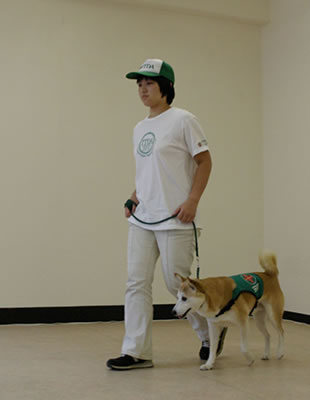
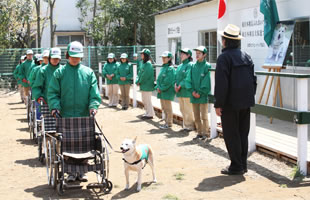
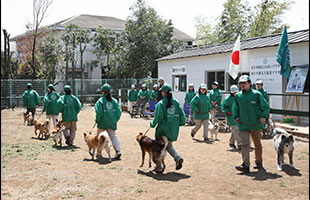

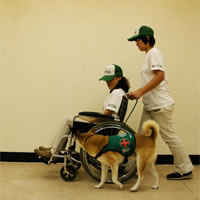
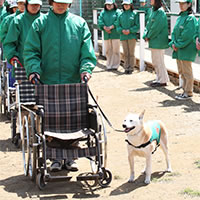
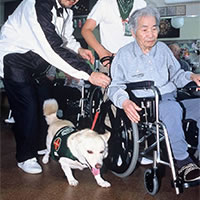
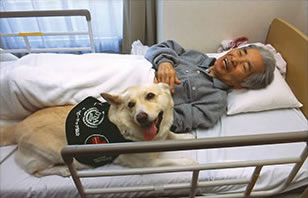
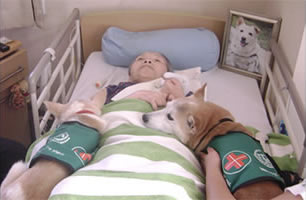

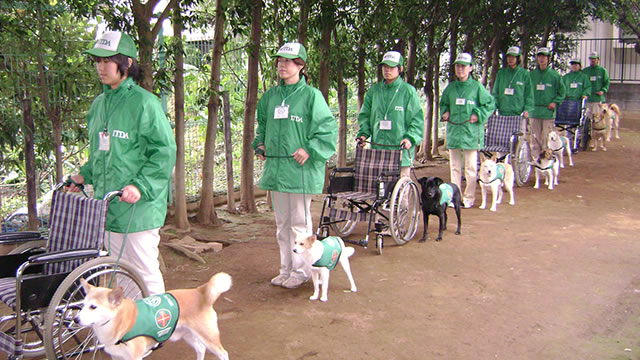

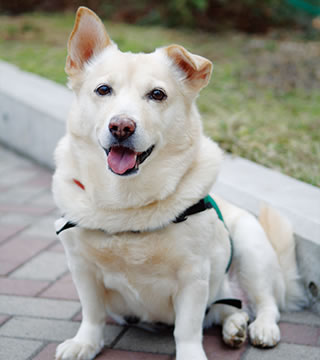
 名犬チロリブロンズ像
名犬チロリブロンズ像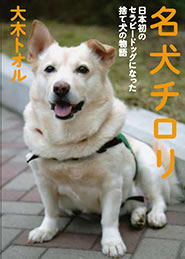 名犬チロリ
名犬チロリ チロリのまなざし
チロリのまなざし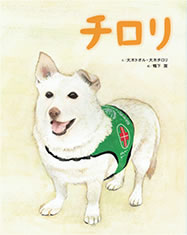 チロリ(絵本)
チロリ(絵本) がんばれ名犬チロリ(絵本)
がんばれ名犬チロリ(絵本) 名犬チロリ切手
名犬チロリ切手